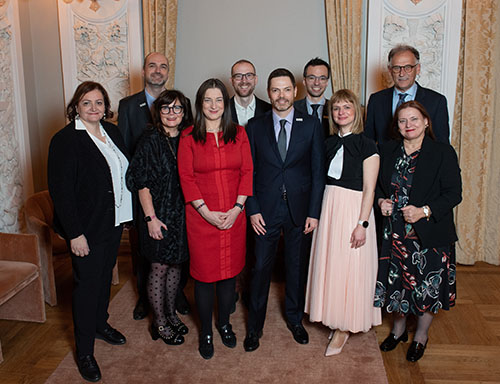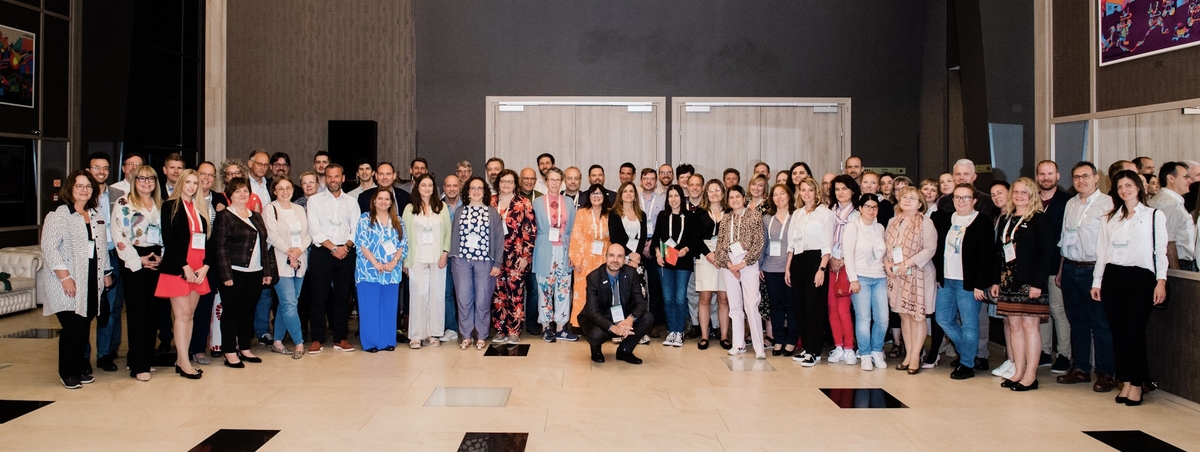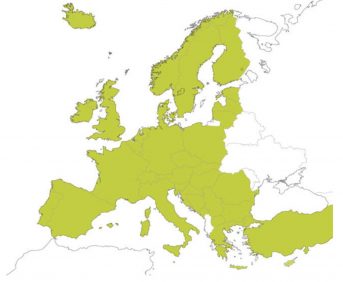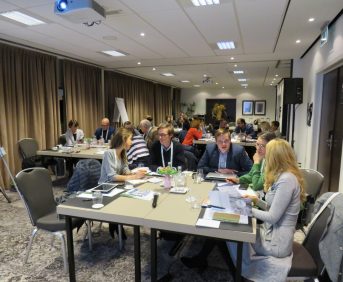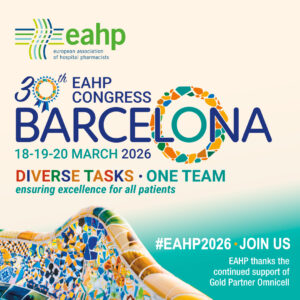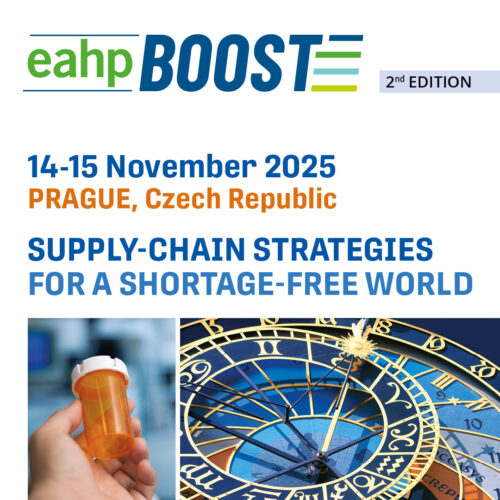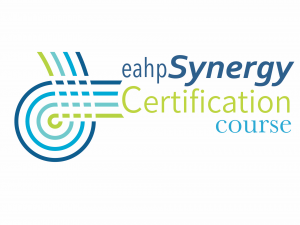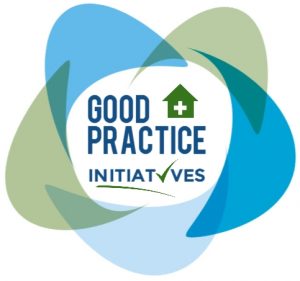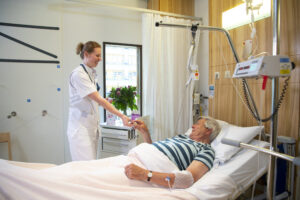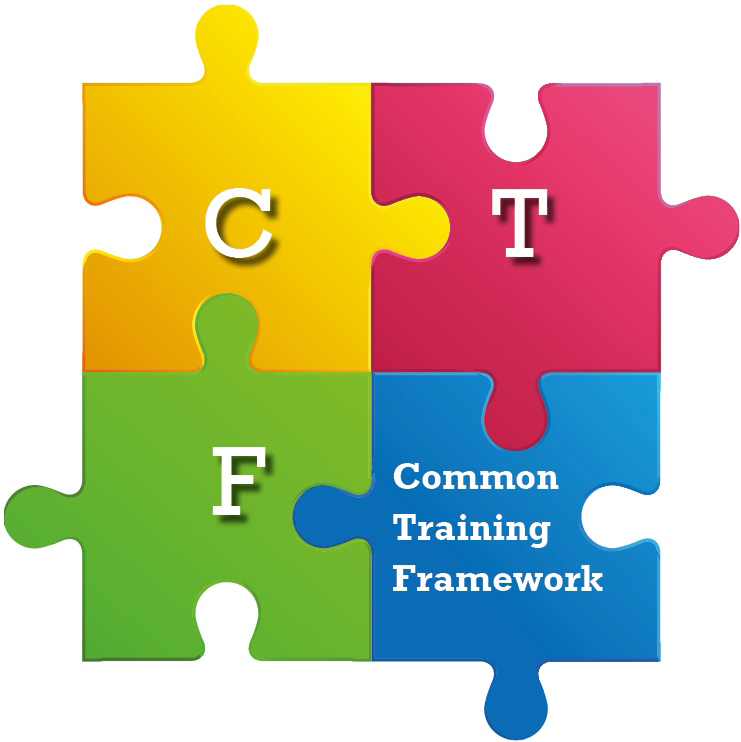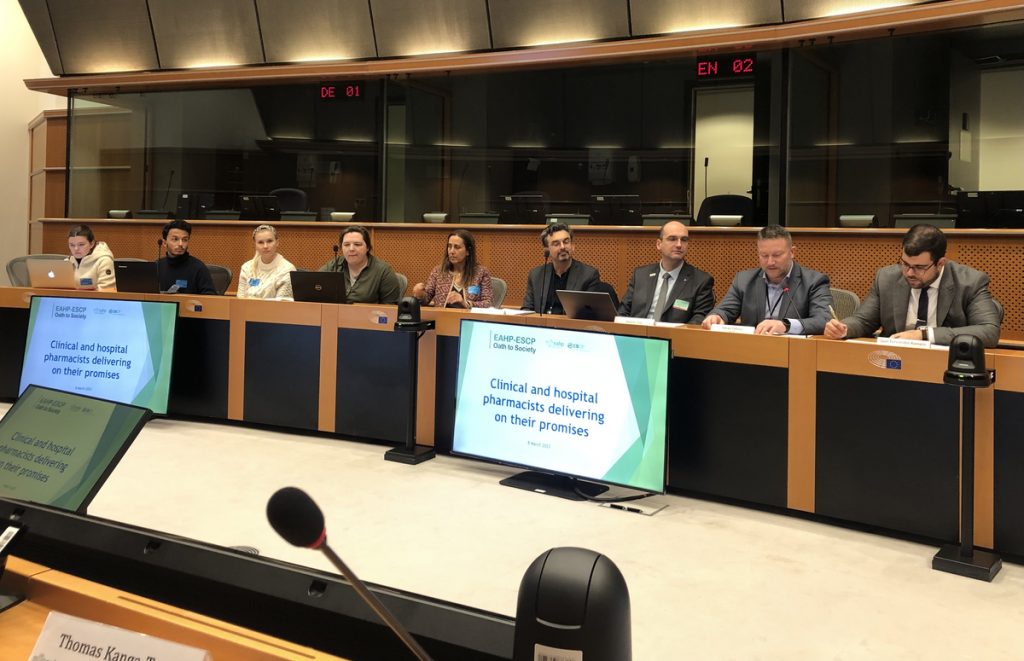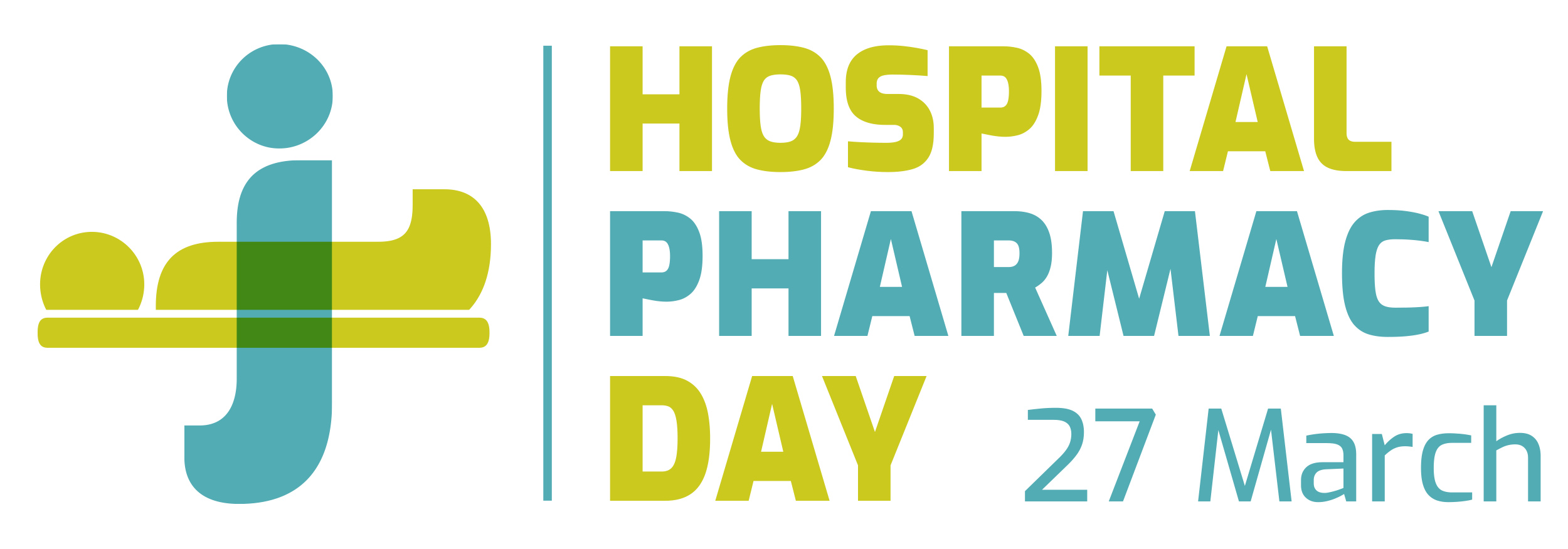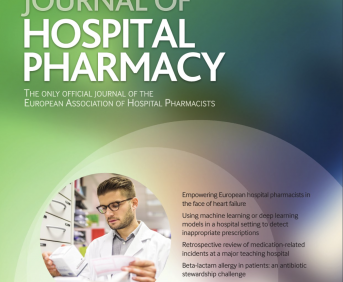DESIGN AND IMPLEMENTATION OF A PROGRAM FOR THE ADMINISTRATION AND FOLLOW-UP OF PHARMACOTHERAPEUTIC DRUGS IN PATIENTS WITH LONG-ACTING ANTI-HIV DRUGS
Pdf

European Statement
Clinical Pharmacy Services
Author(s)
MARTÍNEZ LLIBERATO, A; COMPANY ALBIR, MJ; VICENTE ESCRIG, E; VALLEJO GARCÍA, R; RUBIO ORTOLÁ, L; GARCÍA MONTAÑÉS, S; BELLÉS MEDALL, MD; FERRANDO PIQUERES, R
Why was it done?
It was carried out to ensure the best monitoring, traceability and conservation of long-acting antiretroviral drugs, as well as to improve adherence and patient quality of life and reduce stigma in HIV patients.
What was done?
A program was developed for the administration and pharmacotherapeutic monitoring of patients who are candidates for long-acting antiretroviral treatment (LA-ART), coordinated with the infectious diseases unit (IDU) and the Hospital Pharmacy Outpatient Unit (HPOU).
How was it done?
After the inclusion of the drugs in the pharmacotherapeutic guide, the following program was designed:
1. Identification and communication to the HPOU by the IDU of patients who are candidates for LA-ART and electronic prescription.
2. Initial visit (week 0):
• Review and validation of the treatment by the pharmacist: indication, dosage regimen, interactions, contraindications.
• Planning of the annual administration calendar, providing two dates within the window period allowed by these drugs. Patients are scheduled for pharmaceutical care (PC) and administration on working Thursdays, in the HPOU Health Education Consultation agenda, which has a nurse.
• Information to the patient by the pharmacist, orally and in writing, about administration and adverse reactions. In addition, the annual appointment schedule is provided.
• Appointment of the patient for the first successive visit, if the patient accepts the start.
3. SMS sent the day before, to remind the patient of the follow-up visit. If the patient cannot attend the scheduled appointment, he/she will contact the HPOU to schedule an alternative date according to the calendar.
4. Successive visits (week 4 and every 8 weeks):
• PC
• Intramuscular administration by a nurse.
In all visits, the information is recorded in the patient’s computerized medical history.
What has been achieved?
Of 18 candidate patients in 18 months, 15 accepted ART after the initial visit. 89 PC and administration consultations have been carried out. Adherence was 100%, all reported local discomfort at the injection site between 1 and 7 days after administration and only 1 patient reported pyrexia.
What next?
A program applicable to all HPOU that have nursing and a Health Education consultation to implement adherence in these patients.
PAUSING NON-CRITICAL MEDICATION DURING SHORT HOSPITALIZATION
Pdf

European Statement
Clinical Pharmacy Services
Author(s)
Arnela Boskovic
Gitte Stampe Hansen
Why was it done?
To ensure rational use of medicines during the acute phase of illness, an interdisciplinary group consisting of physicians, nurses, pharmacists, and the Hospital Pharmacy was initiated to determine if some medicines could be paused during shorter hospital admissions at The Medical Acute Care Unit, Bispebjerg Hospital.
What was done?
Patients in acute phase of illness may experience fatigue, nausea, swallowing difficulties, and cognitive challenges when faced with large amounts of oral medicine. Therefore, prioritizing life-critical medicines during hospitalization is essential, while non-critical medicines could temporarily be paused. Additionally, there is often medicine waste, where drugs are assumed to be administered but remain untouched on the bedside table. In acute care units with complex patients, optimizing nursing time, shelf space in the medicine room and managing costs is crucial for appropriate medication.
How was it done?
Information about the new practice was given via newsletters, oral presentations, and signs at the doctor offices and in the medicine room. The group identified statins, multivitamins and calcium supplements as non-critical, and these were hereafter removed from the shelves in the medicine room. The interdisciplinary division of roles were as follows; Physicians: Prescribe critical medicine and temporarily pause non-critical medicine; Nurses: Do not administer statins, multivitamins, or calcium supplements. If the prescription has not been paused, request the physician to do so; Pharmacists: Assist in pausing non-critical medicines; Hospital Pharmacy: Ensure availability of the correct medicine in the medicine room.
What has been achieved?
Temporarily pausing statins, multivitamins, and calcium supplements during short hospitalization led to minimizing medicine waste and freed up time for the nurses to do other nurse-specific tasks. Medicine administrations by nurses were reduced by 87-96%. It also resulted in optimized space in the medicine room, making space for more critical medicine such as medicines to treat epilepsy and Parkinson’s disease.
What next?
Expanding the list of non-critical medicine during short hospitalizations is in the pipeline. This will be done by interdisciplinary collaboration and will free up time for the nurses and doctors to focus on the acute care of the patient.
TO IMPROVE TIMELY MEDICINES PROVISION AND ENSURE SAFE PRESCRIBING AS WELL AS SUPPORT EARLY DISCHARGE PLANNING TO IMPROVE FLOW INSIDE AND OUTSIDE AN NHS TRUST
Pdf

European Statement
Clinical Pharmacy Services
Author(s)
Christina Anastasiadou – Lead Pharmacist Acute & Emergency Medicine
Karen Dicks – Chief Pharmacy Technician Medicines Management
Radhika Patel – Pharmacy Technician MMS
Why was it done?
Until October 2023, the A&E department in Croydon University Hospital in London lacked a full-time pharmacy service, unlike other London trusts. This has contributed to suboptimal medicine management and a delay in the identification of prescribing errors. This has resulted in longer stays, missed medication doses, and a rise in patient safety incidences. At a hospital level this reduces flow and increases cost due to medication wastage. Ultimately, the aim is to improve the flow of patients within the hospital via timely medicines provision, early clinical pharmacy intervention and early discharge planning.
What was done?
We have obtained funding from the Better Care Fund for a period of 2 years. This funding is aimed at assisting local systems in effectively achieving the integration of health and social care in a manner that promotes person-centred care, sustainability, and improved outcomes for individuals and caregivers. Therefore, we introduced a full-time pharmacy service including one pharmacist and two medicines management technicians (MMTs)—one full-time and one part-time. This initiative was implemented as a 2-year trial period, using key performance indicators (KPIs) to evaluate its effectiveness.
How was it done?
Data has been collected against the below KPIS:
1) Number of drug histories completed on admission, before patient is allocated a ward (by MMT or pharmacist) per calendar month.
2) Number of medicines reconciliations completed (by pharmacist) per calendar month.
3) Number of clinical interventions completed by all members of the pharmacy team.
4) Savings secondary to the use of patient’s own drugs (PODs) brought from home for administration to reduce medicines wastage.
5) Savings due to the return of medicines to inpatient pharmacy for re-use from other patients when appropriate.
6) Time between request of medicines from pharmacy dispensary and medicine being dispensed, checked and released to A&E.
7) Review of stock lists in all areas in A&E.
8) Reduction in omitted doses.
9) Discharge medicines supply and screening from A&E to streamline discharge.
10) Number of patients counselled on their medicines and provided with patient-friendly information on them.
11) Number of referrals to community teams i.e allocated chemist via Discharge Medicines Service, Integrated Care Network (ICN) pharmacists or specialty teams (i.e anticoagulation clinic for newly initiated anticoagulant) to provide continuation of care.
12) Liaising with specialty teams within the hospital to expedite review and treatment in a time efficient and cost-effective way.
What has been achieved?
The current pharmacy team is fully integrated into the A&E service and has contributed significantly towards advancing patient experience, via early pharmacy engagement with patients. During the first 10 months of the project, we have data to show:
1) A 540% increase in drug histories and medicines reconciliation on admission.
2) A 19.525% increase in clinical interventions and early detection of medication errors.
3) We have completed 5 teaching sessions so far, in order to tackle common prescribing and medicines management inaccuracies and embedding solutions into nurses and doctors training.
4) We have contributed towards the reduction in omitted doses by 6%.
Positive contribution towards tackling medicines wastage has been shown too. Our team contributed towards saving £13.110 from April to September 2024 by using PODs for administration in hospital and £10.483 by returning dispensed medications to the inpatient pharmacy for recycling and use for other patients for the same time period.
In addition, the team has completed 66 referrals to the community pharmacy team for follow up on newly started medicines, stopped medicines, adherence concerns and polypharmacy. This is in order to provide continuous care and establish follow-up after discharge from hospital.
All in all, improved safe patients flow in and out of hospital.
What next?
Work towards a business case for a permanent pharmacy service in A&E, to continue further developing the above. Utilise all the skills our MMTs hold, in order to continue working on patient safety, improved flow and cost improvement plans. Introduce a pharmacist-prescriber who will be able to tackle arising problems as soon as possible and provide high quality care in liaison with doctors, nurses and advanced care practitioners.
INJECTABLE POTASSIUM CHLORIDE: AUDIT OF PRESCRIPTION AND ADMINISTRATION PRACTICES
European Statement
Patient Safety and Quality Assurance
Author(s)
Yosr Trabelsi, Leila Achour, Ikram Fezaa, Samer Sahbi, Chema Drira
Why was it done?
Never events are serious incidents generally linked to human and/or practical errors, which should never happen. Most of these events are avoidable, and are the subject of specific recommendations for the implementation of appropriate protective measures. According to ANSM (French drug safety agency), potassium chloride (KCl) is among the drugs frequently implicated in Never Events.
What was done?
The aim of this study was to assess the prescription and administration practices of injectable KCL in our hospital.
How was it done?
We carried out a 1-month prospective audit between 1 and 30 September 2024. All the prescriptions of injectable KCL were collected and evaluated by a pharmacist using a data collection form. It was divided into 2 sections: preparation and administration. The reference guideline used for this study was the 2022 ANSM recommendations. The results were analyzed using excel.
What has been achieved?
Fifty-five prescriptions were included. The compliance percentage for prescriptions and administration practices was 31.4% and 30.5 %, respectively. Calculation of total intake was compliant and the total volume of diluent was mentioned in all the prescriptions. In 62% of the prescription, the correct specific units were used and in 38.2 % of cases the correct slow infusion rate was prescribed. Nevertheless, the use of the route was inappropriate since only the IV route was prescribed due to the shortage of oral KCl. For administration, final concentration (≤4g/L) of the KCL infusion was respected in 90.9% of cases and all the preparations were labeled.
What next?
The study revealed several non-conformities, leading to the development of an improvement report. Therefore, we decided to implement a training plan about injectable KCl use to ensure patient safety.
RISK ANALYSIS OF THE ADMINISTRATION CIRCUIT FOR ANTICANCER PREPARATIONS USING THE C-LOG® SYSTEM
Pdf

European Statement
Patient Safety and Quality Assurance
Author(s)
S. Arraki Zava (1), A. Kandel (1), S. Herioux (1), C. Monpagens (1), L. Capayrou (2), C. Tailhades (1), V. Grenouilleau (1), S. Ferrari (1)
(1) Pharmacy Department, Pau Hospital Center, 64000, France
(2) Quality Department, Pau Hospital Center, 64000, France
Why was it done?
In the current context of rising production of anticancer preparations (AP), our hospital has adopted the C-log® tool to improve the safety and traceability of AP administration.
What was done?
Evaluation of the integration of the C-log® solution into the AP administration circuit in the oncology day ward.
How was it done?
From June to September 2024, a risk mapping (RM) using FMEA (Failure Mode and Effect Analysis) for the AP administration circuit was conducted by a multidisciplinary team (quality and IT departments, hospital pharmacists, pharmacy technicians, logisticians, nurses, and healthcare managers). After evaluating the circuit, failures, their causes and effects were identified. A residual criticality score was calculated (C=F*S*M) for each failure, considering its frequency F, severity S, and level of control M, and classified into 3 categories: acceptable (C<4), vigilance (4≤C<10), unacceptable (C≥10). An action plan was developed with corrective measures (CM).
What has been achieved?
RM identified 39 failures: 34 acceptable, 4 unacceptable, and 1 classified as vigilance. First unacceptable risk was related to disruptive patient episode identifier (PEI) scanning due to wristband opacity. Another came from mismatches between the wristband PEI and that on the AP label, when patients had multiple administration days with different PEIs for each, while AP labels only contained the first PEI. Third one is related to nurse’s lack of training which led them to miss important administration information on the software. The last unacceptable risk was increased time to trace all protocol administrations (checkpoints, premedication, AP…). The vigilance risk was due to the inability to trace anticipated premedication intake on the software.
CM includes the use of clearer wristbands and permanent ID number instead of PEI solving unacceptable failures. We decided to use C-log® for AP administration traceability only, while CHIMIO® remains to trace all other protocol administrations. New training sessions for nurses will be scheduled.
What next?
RM highlighted C-log’s contribution to reinforce identity vigilance. It demonstrated the importance of nurse’s acceptance of the software and therefore the need for sufficient training time on the tool. Focusing on an entire protocol administration traceability, C-log® couldn’t replace CHIMIO® yet. Once all the CM are implemented, the RM will be re-evaluated to assess their impact.
OPTIMIZATION OF THE ADMINISTRATION METHOD FOR LUTETIUM (177Lu) OXODOTREOTIDE IN THE TREATMENT OF NEUROENDOCRINE TUMORS
Pdf

European Statement
Patient Safety and Quality Assurance
Author(s)
Luísa Álvares
Sara Brandão Madureira
Diana Monteiro
Patrocínia Rocha
Why was it done?
Lutetium (177Lu) oxodotreotide is indicated for treating subtype 2 somatostatin receptor-positive (SSTR2) gastroenteropancreatic neuroendocrine tumors, well-differentiated G1 and G2, progressive, inoperable or metastatic. This radiopharmaceutical targets cells with SSTR2 overexpression, emitting radiation that causes cell death.
Initially, the Summary of Product Characteristics (SmPC) included the gravity method for intravenous administration, using a system with two needles, one connected to a NaCl 0.9% solution, with or without a perfusion pump, using gravity to facilitate the flow of the radiopharmaceutical.
This method was adopted and optimized due to incidents during administration.
What was done?
Optimization of the administration method of lutetium (177Lu) oxodotreotide to maximize the administered radioactivity and enhance protection for healthcare professionals.
How was it done?
The first administration using the described method occurred in October 2022.
Subsequent treatments required transferring the radiopharmaceutical to a syringe and using a syringe pump due to incidents during administration.
A perfusion pump was later introduced to manage the flow of NaCl 0.9% solution.
In May 2024, a three-way stopcock was connected to the short needle.
What has been achieved?
Since October 2022, 23 administrations have been conducted. In the first, the percentage of remaining radioactivity in the vial was 2.19%.
The use of a syringe pump increased handling and exposure risks and was rejected due to the lack of protective barriers.
Adding a perfusion pump to the NaCl 0.9% line didn’t fully resolve perfusion issues. This was resolve by adding a three-way stopcock connected to the short needle. The additional third line allows for a syringe to be attached and force air into the system, promoting the radiopharmaceutical flow.
The average remaining radioactivity improved from 1.71% to 0.98% after final optimization.
No incidents, such as leaks or perfusion issues, occurred after optimization.
This optimization reduced the remaining radiopharmaceutical activity values, ensuring complete administration. It also minimizes professional exposure and contamination risks, as the radiopharmaceutical remains in the original vial, as indicated in the SmPC.
What next?
We aim to apply this optimized method in other treatments with the same radionuclide.
« S’cape Pharm: Can you keep your cool? » Design and implementation of an educational escape game in Chirec’s distribution departments
Pdf

European Statement
Education and Research
Author(s)
Pascaline Hubot , Elise Francq, Guy Stichelbaut
Why was it done?
Hospital pharmacy is a constantly evolving field that requires ongoing training. New teaching strategies based on the gamification of educational objectives have been making headlines for several years. These include EG.
What was done?
An educational escape game (EG) has been designed and implemented for hospital pharmacists and pharmaceutical-technical assistants (Apth) working in one of Chirec’s distribution departments (Belgium). The objectives were : to provide continuing education and to improve various cross-disciplinary skills such as communication, team cohesion and critical thinking.
How was it done?
After considering the various constraints (dedicated time per session, number of players, etc.), a non-linear scenario was constructed. Distribution-specific themes were chosen for the creation of 12 enigmas, some in paper format and others in virtual format using Genially platform (November 2022 version). To ensure that the training sessions ran smoothly, hint envelopes containing the updated procedures were provided. Finally, the EG was pilot tested to get an idea of the game’s timing, to identify and correct any practical problems, and to adapt certain enigmas deemed too complex if necessary.
What has been achieved?
Nine sessions were held between December 2022 and September 2023. Each session included : briefing (5’), EG session (45’), debriefing (10’) and the distribution of an anonymous satisfaction survey at the end of the session (2’). Pharmacists (n = 24) and Apth (n = 15) respectively agreed (37.5% (n = 9) ; 66.7% (n = 10)) and strongly agreed (54.2 % (n = 13) ; 20% (n = 3)) that the EG improved their knowledge, and all participants found the EG to be a good teaching tool. Feedback was also very positive on cross-functional skills such as communication, team cohesion and critical thinking.
What next?
Futures sessions will be planned for newcomers to the pharmacy. Given the popularity of this educational tool and the suggestions for new topics, a new EG theme will certainly be on the agenda for 2024 pharmacy continuing education.
Development of bags ready to use for parenteral nutrition in the preterm patient
Pdf

European Statement
Production and Compounding
Author(s)
Eleonora Castellana, Simonetta Felloni, Matilde Scaldaferri, Giuseppina Bonfante, Elena Maggiora, Francesco Cresi, Maria Francesca Campagnoli, Alessandra Coscia, Maria Rachele Chiappetta, Francesco Cattel
Why was it done?
The purpose was to provide the Neonatal-Intensive-Care-Unit (NICU) with ready-to-use bags that could improve patient safety by minimizing procedural incidents and maximize resource efficiency while providing clinically appropriate nutrition for the single PP.
What was done?
Seven standard bags (SSB), ready-to-use, have been formulated and developed for parenteral nutrition (PN) in preterm patients (PP). An assisted prescribing software was developed for selecting the most appropriate standard bags (SB).
How was it done?
The project was carried out in collaboration between pharmacists, nurses and neonatologist of NICU.
The composition of the SB was identified from the retrospective analysis of the types of individualized bags requested from the Pharmacy and from the analysis of the recommended ESPGHAN-Paediatric-Parenteral-Nutrition-2018 contributions.
What has been achieved?
SSB ready-to-use were identified:

The bags have been produced by an industrial partner according to Good Manufacturing Practice-Annex 1. The shelf life is 90 days.
The SSB were implemented successfully on the PP. Starting from 2021, approximately 250 bags/month have been used, with a reduction in individual preparations by the Pharmacy of approximately 80%.
This approach showed results in terms of clinical results and economic outcomes. The computer program guided the physician to the most appropriate standardized solution.
Early and timely administration of ready-to-use PN showed reduced weight loss and a shorter duration of PN than individualized bags (21 vs 25 days).
What next?
The project described has shown benefits including improved nutrient supply, fewer prescribing and administration errors, lower risk of infection, cost sav-ings, ready availability of the bags 24/7 and safe and effective supply of SB. This project will be strengthened in our hospital.
Interdisciplinary management of acute acetaminophen poisoning guided by therapeutic drug monitoring
European Statement
Patient Safety and Quality Assurance
Author(s)
Irene Centeno López, Eva M Legido Perdices, Maria José Cano Cano, Salvador Benlloch Pérez, Federico Peydró Tomás, José Manuel Ventura Cerdá
Why was it done?
Acetaminophen is the most used antipyretic and analgesic drug around the world. Intentional and non-intentional acetaminophen overdose is related to acute liver failure and it is important to start the treatment during the first hours after the intake to reduce liver injury. The main treatment to prevent liver failure is n-acetilcysteine (NAC) and it is administered depending on acetaminophen plasmatic concentrations using Rumack-Matthew nomogram during the first 24 hours. Variability in sampling time and duration of NAC administration was detected when acetaminophen intake was unknown or above the first 24h. Moreover, different NAC administration protocols were used in our institution.
What was done?
An interdisciplinary team involving Hospital Pharmacy, Emergency, Gastroenterology Department and Critical Care Unit was created to establish an agreed protocol for the management of acute acetaminophen poisoning.
How was it done?
The interdisciplinary team agreed the following procedures:
– To change the traditional NAC protocol of three intravenous infusions (150 mg/kg over 1 h, 50 mg/kg over 4h and 100 mg/kg over 16h) to the SNAP protocol of two bags (100 mg/kg over 2h and 200 mg/kg over 10h) reducing duration of administrations from 21 to 12 h.
– To establish the sampling times for the determination of acetaminophen serum concentrations: the extraction will be 4h after the ingestion during the first 24h of the intake. When time is unknown or greater than 24h, two samples separated by at least 2h will be extracted to calculate acetaminophen half-life to assess the probability of liver damage (high probability when half-life (t1/2)>4h).
– Define NAC discontinuation when INR<1.3, transaminases are in normal range and acetaminophen concentration<10 mcg/ml. If one of these parameters remains altered, the last NAC perfusion must be repeated.
What has been achieved?
– Reduce the duration of NAC treatment in the Emergency and hospitalization rooms if all analytical parameters are normalised.
– Reduce the variability in the management of acetaminophen poisoning and sampling time.
– To perform a closer clinical follow up of intoxicated/over-medicated patients.
What next?
Measure the reduction of hospital admissions and safety improvement by modifying NAC administration protocol and therapeutic drug monitoring of acetaminophen.
Improving efficiency in the infusion unit through a critical review of medication protocols
Pdf

European Statement
Clinical Pharmacy Services
Author(s)
Jesper van Breeschoten, Chang Chui, Bert Storm, Grootswagers-Sobels Annemieke
Why was it done?
After the introduction of new medications in a hospital, it is uncommon for local treatment and administration protocols to be reevaluated in light of the latest scientific evidence. Infusion units are facing numerous challenges today, including staffing shortages and a growing number of patients receiving intravenous treatments. It may prove beneficial to periodically conduct a comprehensive review of the current protocols, with the objective of minimizing the time patients spend in the infusion unit and to prevent unnecessary use of medication while upholding the delivery of high-quality care.
What was done?
We performed an extensive review of treatment protocols for all medications administered at our infusion unit.
How was it done?
We performed an extensive review of treatment protocols for all medications administered at our infusion unit, drawing insights from the most recent literature. Our evaluation covered a range of factors, including premedication, infusion rates, observation periods, line flushing, administration routes, hydration strategies, and anti-emetic regimens. To provide additional data supporting protocol refinements, we utilized an electronic health record text mining tool known as CTcue, which facilitated the collection of retrospective patient information. Subsequently, these protocol modifications received unanimous approval from both pharmacist and attending specialist.
What has been achieved?
Treatment and administration protocols of 17 medications were optimized. We decreased infusion times for atezolizumab, bevacizumab, carboplatin, doxorubicine, durvalumab, folinic acid, irinotecan, panitimumab, vinblastine and vincristine. Vital sign assessment during infusion were omitted from protocols. Premedication and anti-emetic medication were converted to oral administration. Intravenous administration was converted to subcutaneous administration for abatacept, daratumumab, infliximab, tocilizumab, trastuzumab + pertuzumab and vedolizumab. Observation time after infusion was omitted for daratumumab, infliximab and vedolizumab. Based on the current literature, hydration schemes of cisplatin were shortened from 20 hours to 4 hours. The implementation of all optimization measures resulted in a reduction of ± 6000 hours of bed occupancy by patients annually. Based on our estimation, this has resulted in a reduction of approximately 16% in total time that beds were occupied.
What next?
We aim to periodically review our treatment and administration protocols and share our experiences with other hospital pharmacists. Other infusion units that also face challenges in shortness of staff may copy this blueprint to mitigate these problems.
